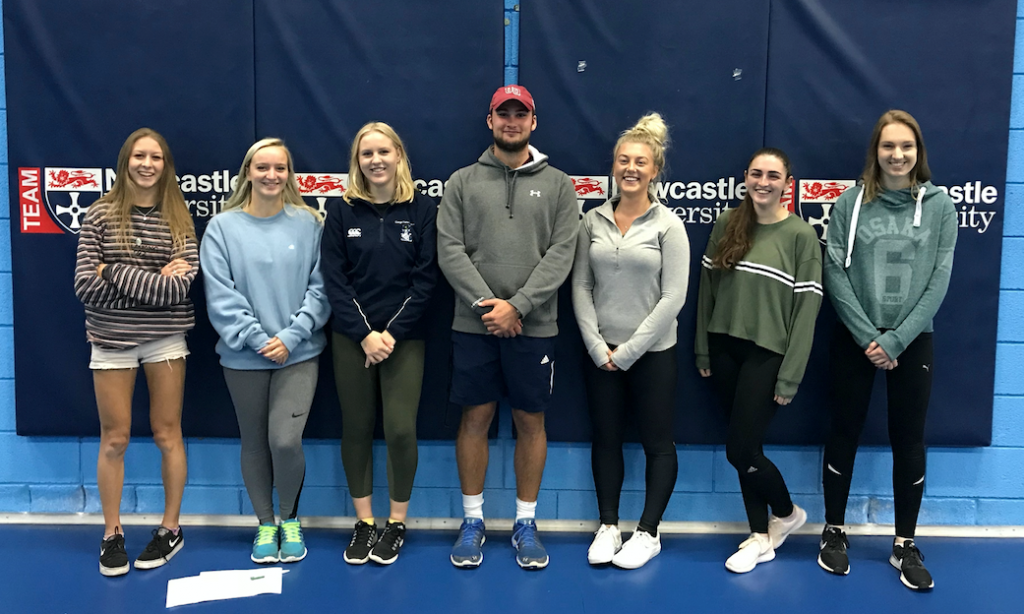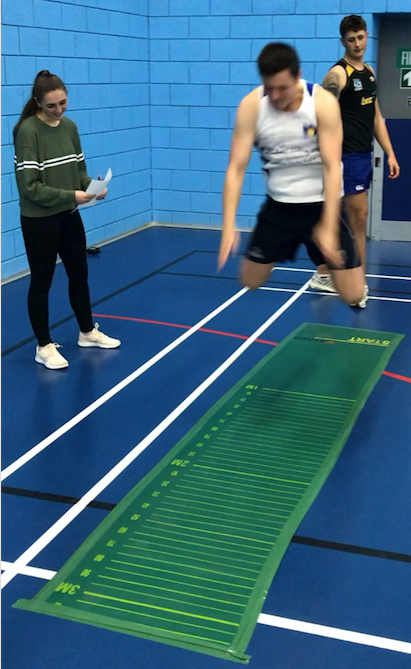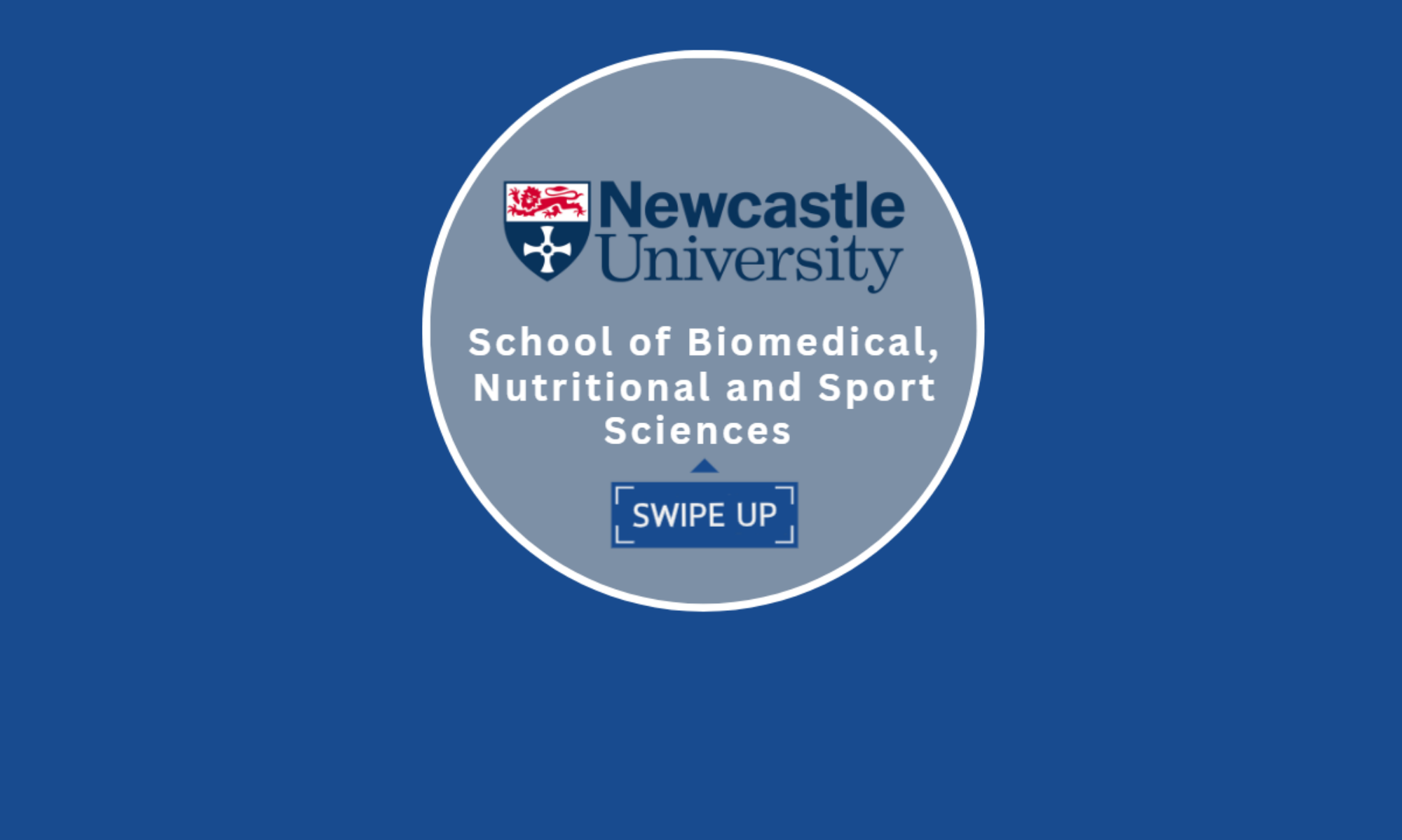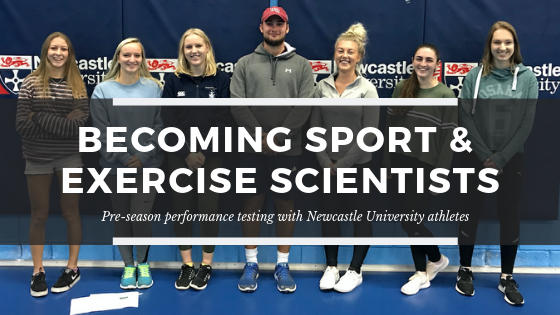With a tough season ahead, Newcastle University Rugby Union Performance Squad enlisted the help of staff and students from Sport and Exercise Science to perform physiological testing to inform the squads training and preparation. Seven second year Sport and Exercise Science students lead the physiological testing of the squad in collaboration with academic staff, technical staff and the Squad’s strength and conditioning coach. It was a real team effort to ensure the day ran smoothly and that all athletes put in their best efforts.
 Second Year BSc (Hons) Sport and Exercise Science students improving their sport and exercise science skills
Second Year BSc (Hons) Sport and Exercise Science students improving their sport and exercise science skills
Body Composition
Our students Louis, Liv and Katie performed body composition measures including height, body mass and a selection of girths. These are used to track the athletes changes in mass, proportions and composition over the course of a season and between seasons.
Explosive Leg Power
Abbie and Anna did a great job measuring the athletes explosive leg power using both a countermovement and broad jump. The rugby players must have excellent lower limb power to help break tackles, lift at line outs and scrummage.

The countermovement and broad jump tests might look very similar but they in fact measure different athlete abilities. In the picture above the athlete is completing a countermovement jump which measures leg explosiveness in a vertical direction. In the picture below the athlete is completing a broad jump, which measures leg explosiveness in a horizontal direction. The game of rugby demands that force is produced quickly (power) in both horizontal (e.g. sprinting, scrums) and vertical directions (e.g. jumping).

Speed & Flexibility
The ability to accelerate during rugby is important for success. Rosie ran the 20m sprint session encouraging athletes to give their all through the timing gates. It was important that the athletes covered the 20m distance as quick as possible, not slowing down until they had crossed the finish line.
Kirsty looked at the flexibility of the athletes using a sit and reach test. This test assesses hamstring and trunk flexibility. Rugby players are moved into a range of positions when tackled or involved in rucks and mauls. One of the risk factors for injury is inflexibility and whilst being moved into these positions an inflexible athlete may be more prone to injury.

The results will be used to ensure the conditioning program is appropriate and individual for each player to enable them to reach their potential and contribute to the squads’ success this season. The Strength and Conditioning coach commented that it was “excellent feedback for the players”. The measurements will be repeated throughout the season and we are hoping that the players will continue to improve over time.
The testing morning was a success and that is thanks to our students and their hard work. These are our future sport and exercise scientists and they have made a great start in refining their skills.
The perks of studying at Newcastle University
Students on our Sports and Exercise Science degrees are encouraged to take every opportunity to get real-life, hands-on experience of applying their learning in athletic scenarios. This collaboration is just one example of the different ways our students gain experiences and put their skills to the test. To find out more about our programmes at Newcastle you can visit our School Website and download our Course brochure, FAQs and Degree Programme flyers.

